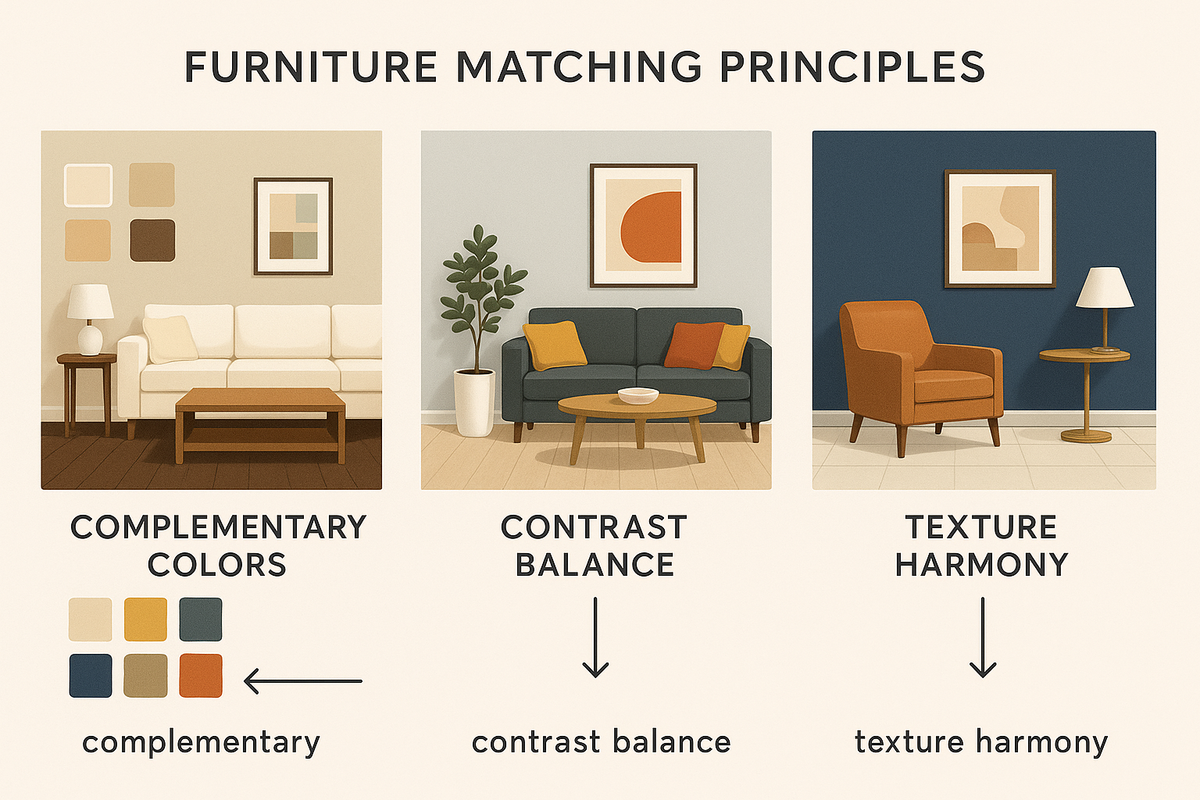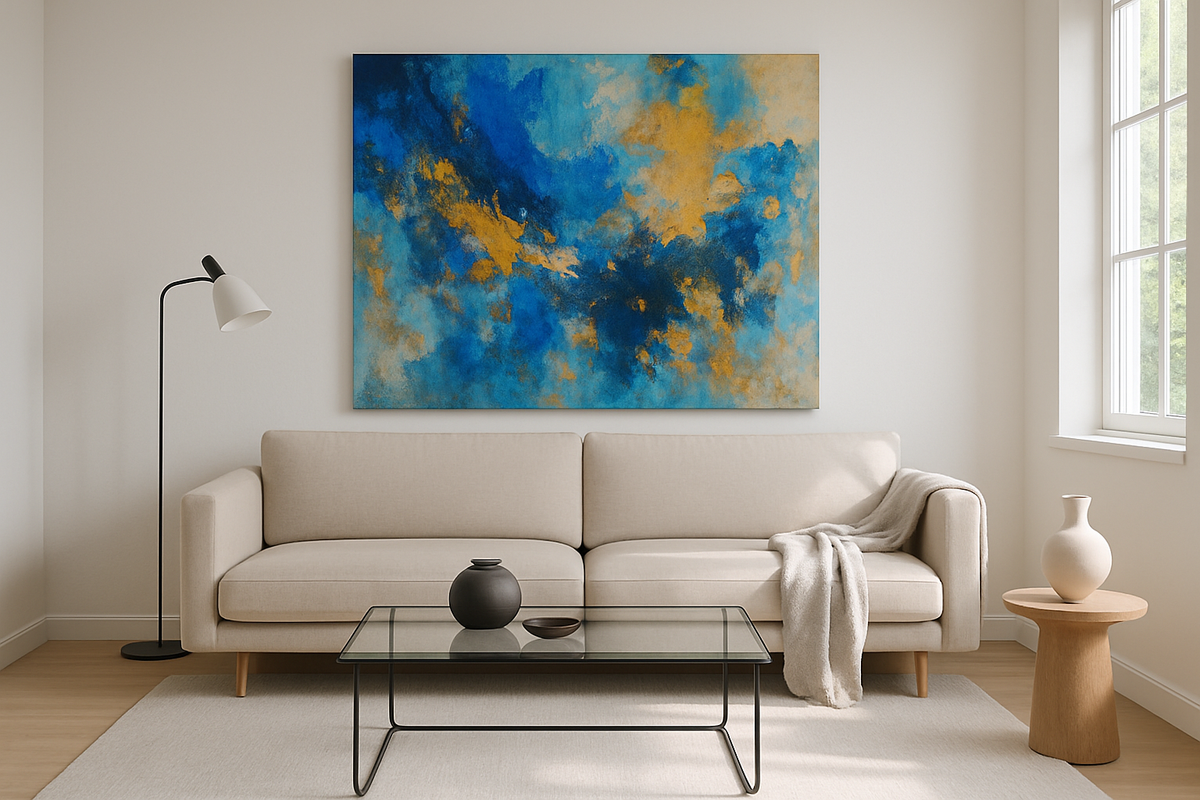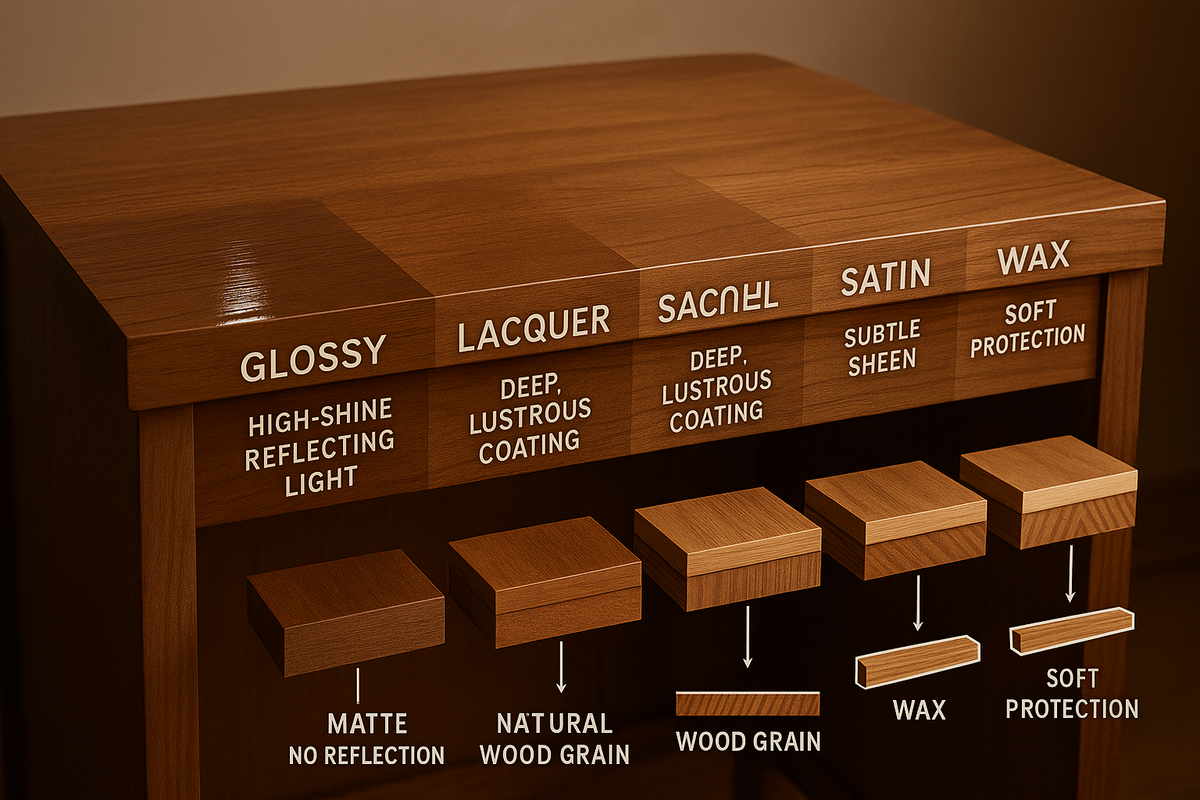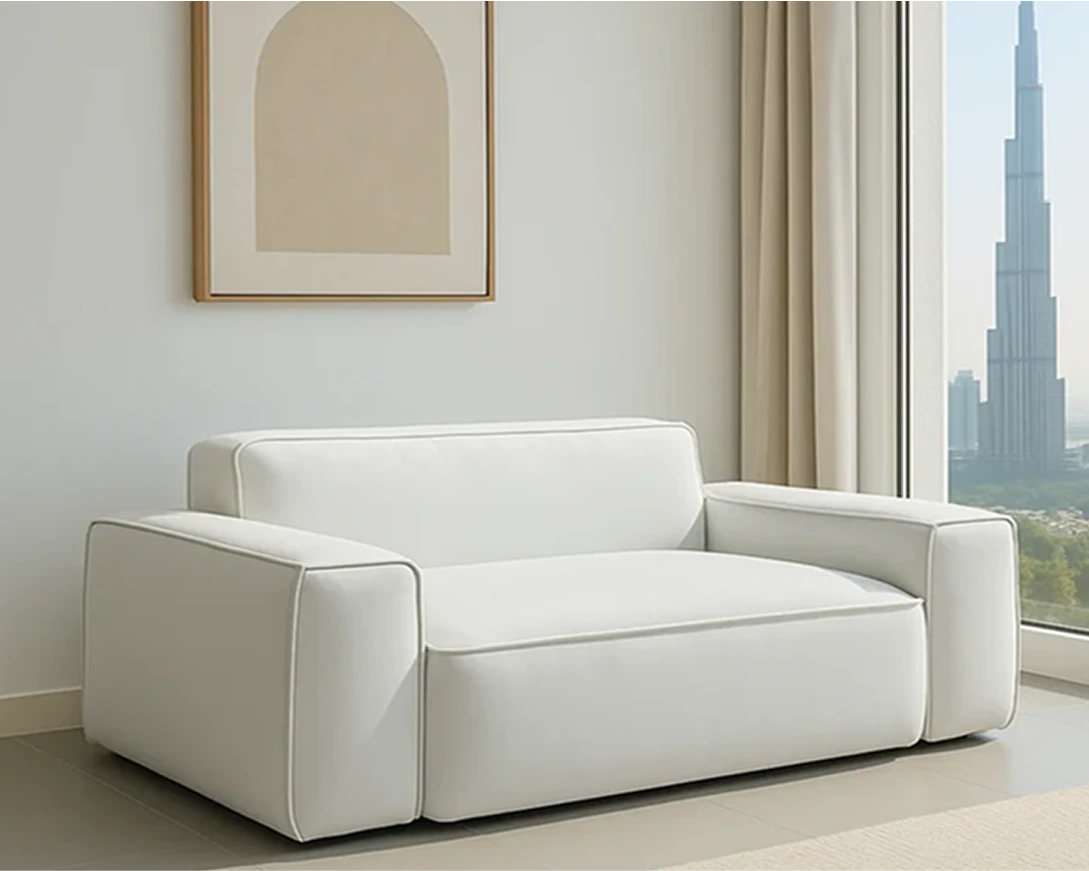Finding difficulty in arranging living room furniture? Whether you're moving into a new home or simply giving your living room a fresh look, furniture arrangement plays a crucial role in creating a comfortable and visually appealing space.
In this comprehensive guide, we'll explore practical strategies, creative ideas, and expert advice to help you maximize your living room's potential. From finding the perfect focal point to optimizing traffic flow, these tips will transform your living room into a harmonious and functional oasis. So, let's begin and discover how to arrange your furniture like a pro!

Start with a Clean Slate
Before diving into the intricacies of arranging your living room furniture, it's essential to clear the room of any existing furniture or clutter. Imagine your living room as a blank canvas—a fresh space waiting to be transformed. Here's how to approach this step:
- Take out all the furniture pieces currently in the room. This includes sofas, chairs, coffee tables, and any other items.
- Clearing the space allows you to see the room's true dimensions and envision new possibilities.
- Get rid of unnecessary items, such as old magazines, decorative knick-knacks, or unused electronics.
- A clutter-free environment will help you focus on the layout without distractions.
- Stand in the center of the room and observe its shape, size, and architectural features.
- Note any windows, doors, or built-in elements (like a fireplace) that will impact furniture placement.
By starting with a clean slate, you'll be better equipped to plan your living room layout effectively. Now let's explore the next steps in arranging your furniture for optimal comfort and style!

Find Your Focal Point
The focal point of your living room serves as the anchor around which your furniture arrangement revolves.Whether you're learning how to decorate a studio apartment in 2025 modern decorating ideas or revamping a larger space. It's the eye-catching element that draws attention and sets the tone for the entire space. Let's delve into the details::
- Look around your living room and determine what stands out. Common focal points include:
- If you have a fireplace, it's often a natural choice for the focal point.
- In modern homes, the TV screen often becomes the central feature.
- A beautiful view or a large window can serve as the room's focal point.
- A striking piece of art or a gallery wall can steal the show.
- Unique architectural features like exposed brick walls, built-in bookshelves, or decorative molding can also be focal points.

Arranging Furniture Around the Focal Point:
Once you've picked the focal point, organize your furniture to complement it:
- If the fireplace is your focal point, arrange seating around it.
- If the TV is the star, create a cozy seating area facing the screen.
- Ensure that other furniture pieces (coffee tables, side tables, etc.) harmonize with the focal point.
- Don't place large furniture directly in front of windows or artwork.
- Decide whether you want a symmetrical arrangement (matching furniture on both sides of the focal point) or an asymmetrical one (more organic and varied).
A well-arranged living room revolves around its focal point, creating a cohesive and visually pleasing design. Let's move on to more expert tips!
Consider Scale
Understanding the scale and proportions of both your room and furniture pieces is crucial for achieving a harmonious living room arrangement. Think about decorating tips for arranging living room furniture:
- Measure room dimensions (length, width, ceiling height).
- Choose appropriately sized sofas and chairs that fit within your space.
- Avoid oversized furniture in small rooms and underwhelming furniture in large rooms.
Room Proportions:
Begin by measuring the dimensions of your living room. Note the length, width, and ceiling height. Consider the overall visual balance. If your room is small, bulky furniture can overwhelm the space.
Conversely, in a large room, tiny furniture may look lost. High ceilings allow for taller furniture pieces, while low ceilings call for lower-profile furniture.

PHOTO BY PIXABAY FORM PEXELS
Furniture Proportions:
Choose sofas and chairs that fit comfortably within the room. Avoid oversized pieces that dominate the space. These should be proportional to the seating area. A too-small coffee table can look insignificant, while an overly large-one can obstruct movement.
Ensure they accommodate your TV and any additional media equipment without overpowering the room. Opt for rugs that are large enough to anchor the furniture. Ideally, all key pieces (sofa, chairs, coffee table) should sit on the rug.
Traffic Flow:
Arrange furniture to allow for comfortable movement. Avoid blocking doorways or creating tight pathways. Leave enough space between furniture pieces. For instance:
- Allow 36 inches for chairs to be pulled out.
- Leave 24–30 inches around the bed for easy access.
Choosing appropriately sized furniture ensures a balanced and functional living room. Let's move on to more tips for creating an inviting space!
Sketch Out Your Room
Creating a rough sketch of your living room layout is an essential step in the furniture arrangement process. By visualizing the room on paper, you can better plan the placement of furniture and ensure optimal flow. Let's break it down:
Measurements:
Note the dimensions of length and width of your living room on your sketch. If your ceiling is particularly high or low, include this information as well.

PHOTO BY JEANVANDER MEULEN FORM PEXELS
Architectural Features:
Mark the locations of doors (entryways, closet doors) and windows. Consider how these openings affect furniture placement. For instance, you wouldn't want to block a window with a large sofa.
If your room has a fireplace, built-in shelving, or other architectural features, indicate them on your sketch. These elements often serve as natural focal points.

PHOTO BY USHINDI NAMEGABE FORM PEXELS
Furniture Placement:
Use your sketch to experiment with different furniture arrangements. Try various layouts to see what works best. Consider creating functional groupings (e.g., seating area, reading nook, entertainment zone). Aim for visual balance by distributing furniture evenly across the room.
A balanced layout is symmetric. So, when possible, create symmetry by placing identical pieces on both sides of the room. This could be as simple as placing matching side tables or lamps on either side of the sofa.
Another thing you can do for a balanced layout is mix different shapes. For instance, if you have a large sofa, pair it with a smaller coffee table and a few smaller chairs. Avoid too many similarly-sized pieces in one area.
Moreover, tall shelves, plants, or even wall-mounted light fixtures can draw the eye upward and add balance, especially in spaces with high ceilings, which are common in many UAE homes.
Start by making rough sketches. Your sketch doesn't need to be perfect—it's a tool to help you visualize and plan. Once you have a clear understanding of your room's layout, you'll be ready to arrange your furniture strategically!
Go Big with a Rug
A well-chosen area rug can transform your living room by adding warmth, texture, and visual interest. Let's explore how to make the most of this design element:
Selecting the Right Rug:
Opt for a large area rug that covers a significant portion of the living room floor. Ideally, all key furniture pieces (sofa, chairs, and coffee table) should fit comfortably on the rug.
Consider the shape of your room. Rectangular rugs work well in most spaces, while round rugs can soften the edges of square or rectangular rooms.

PHOTO BY ANDREA DAVIS FORM PEXELS
Placement Tips:
Position the rug so that it's centered in the room. This ensures balance and symmetry. Allow the rug to extend beyond the furniture slightly. A few inches of rug space around the seating area creates a harmonious look.
Don't place a tiny rug in the middle of the room—it can make the furniture feel disconnected.
Pattern and Texture:
If your furniture is neutral, consider a rug with a bold pattern or vibrant colors. Conversely, if your furniture is already colorful, opt for a more subdued rug.
Choose a rug with a pleasing texture—whether it's a soft shag, a flatweave, or a natural fiber like jute.
A well-proportioned and thoughtfully placed rug can tie your living room together, creating a cozy and inviting atmosphere. Let's continue with more expert tips!

PHOTO BY AALEX QIAN FORM PEXELS
Focus on Your Needs
When arranging your living room furniture, it's essential to prioritize functionality based on how you use the space-family gatherings, movie nights, reading, or hosting guests? For example-When selecting a principal seating piece like a plush “cloud sofa,” explore How to choose the perfect cloud sofa for your home in 2025: Let's discuss the details:
Seating Considerations:
Identify where you'll spend the most time. Is it for family gatherings, movie nights, or reading? Arrange your sofas and chairs accordingly.
If you frequently entertain guests, ensure there's enough seating for everyone. Consider adding accent chairs, ottomans, or a sectional sofa. Arrange seating to allow easy movement between areas without obstruction.

PHOTO BY CHRISTA GROVER FORM PEXELS
Storage Solutions:
If your living room doubles as an entertainment center, invest in a TV stand or media console with storage for DVDs, gaming consoles, and remotes. Incorporate bookshelves or cabinets for books, decor, and collectibles.
Ottomans with hidden compartments or coffee tables with drawers provide extra storage without cluttering the room.
A well-thought-out living room caters to your lifestyle and needs. Now let's explore more expert tips to enhance your furniture arrangement!

PHOTO BY ROBERTO NICKSON FORM PEXELS
Divide Up Your Space
In larger living rooms, creating distinct functional zones ensures that the room serves multiple purposes seamlessly. Let's explore how to divide your space effectively:
Check out How to choose the best airbnb furniture packages a complete guide to create functional zones.

PHOTO BY DMITRY ZVOLSKIY FORM PEXELS
Conversation Zone:
Dedicate an area for conversation. Arrange sofas and chairs in a way that encourages interaction. Place a coffee table within this zone for drinks, snacks, and books. Add floor lamps or table lamps to create a cozy ambiance.

Entertainment Zone:
If your living room includes a TV, designate an entertainment zone around it. Position the TV stand or media console to house electronics, DVDs, and gaming consoles. Arrange seating (sofas, recliners) facing the TV for optimal viewing.

Reading Nook:
Create a quiet reading nook with a comfortable armchair, floor lamp, and side table. Incorporate bookshelves nearby to store your favorite reads. Place the reading nook near a window for natural light.
Dividing your living room into functional zones enhances both aesthetics and practicality. Now let's explore more tips to elevate your furniture arrangement!

Symmetrical Living Room Furniture Arrangement
When aiming for a symmetrical living room layout, follow these expert tips to achieve balance and visual harmony:

Positioning Key Seating Pieces:
Start by placing your primary seating pieces (such as the sofa and armchairs) near the room's focal point. Whether it's a fireplace, TV, or large window, align the seating to face this central feature.
If you have two identical sofas, position them across from each other, framing the focal point. Alternatively, use a sofa and matching armchairs for a balanced arrangement.
Chairs and Sofas Facing Each Other:
Arrange chairs and sofas facing each other to encourage conversation. This setup works well for social gatherings and family interactions. It serves as a practical surface for drinks, snacks, and decor.

End Tables as Landing Spaces:
Position end tables on both ends of the sofa. These tables serve as convenient landing spaces for items like remote controls, books, or a cup of tea. Consider placing table lamps on the end tables for ambient lighting. This adds warmth and coziness to the seating area.

Symmetry creates a sense of order and elegance in your living room. Now let's explore more tips to enhance your furniture arrangement!
Let’s discuss some more creative ideas for placing furniture in a living room.
If space allows, create a seating arrangement where sofas or chairs face each other, with a coffee table in between. This can promote conversation while maintaining an open feel.
In UAE homes where modern or contemporary decor is often embraced, a curved sofa (like those from Marina Home Interiors) can create a visually striking and inviting seating area.
You can also mix contrasting colors and textures to add visual interest. For example, combine a neutral-toned sofa with bold-colored cushions and throw blankets. The use of rich jewel tones like emerald or royal blue can add a luxurious touch.
In the UAE, where luxury living spaces often emphasize clean lines and open spaces, try to keep the furniture minimal and allow the natural materials (like wood, glass, or marble) to shine.
Floating Furniture Arrangement
When your living room lacks free walls or has an open floor plan, a floating furniture arrangement can be both practical and visually appealing. Let's explore how to create this layout:
Center Seating in the Room:
Instead of pushing furniture against the walls, position it toward the center of the room. Arrange chairs and the sofa facing each other. This encourages conversation and interaction among family members and guests.
Ensure that the seating pieces are evenly spaced, creating a harmonious grouping.
Anchor with a Rug:
Place a large rug beneath the seating area. The rug acts as an anchor, defining the space and tying the furniture together. Position the front legs of the sofa and chairs on the rug. This visually connects them and maintains cohesion.
Large Coffee Table:
Choose a substantial coffee table for the center of the arrangement. The coffee table serves as a practical surface for drinks, snacks, books, and decorative items. Ensure it complements the scale of the seating pieces.

PHOTO BY CELIL DOĞAN FROM PEXELS
Central Position
Place the couch centrally in the room, facing the main area of activity (TV, fireplace, or a beautiful view). This ensures everyone has a comfortable spot and can easily engage in conversations or enjoy the TV.
Distance from TV
Keep a reasonable distance from the TV to avoid straining your eyes. Generally, the ideal viewing distance is about 1.5 to 2.5 times the size of the TV screen. For example, a 55-inch TV should be placed 6.5 to 11 feet away.
Lounge Seating
If the room is large enough, consider arranging a sectional sofa in an L-shape to create a more open and comfortable lounging area. This setup works well for large families or hosting guests.
A floating arrangement allows you to maximize your living room's central space while maintaining comfort and functionality. Now let's explore more expert tips for arranging your furniture!
Arrange Living Room Furniture for Functionality and Style
-
Create Zones: In larger living rooms, break the space into zones for different functions. For instance, one area can be for relaxing, and another can be for entertainment. A low coffee table or an area rug can help delineate these zones.
-
Maximize Natural Light: The UAE has beautiful, abundant natural light. Arrange your furniture to take advantage of this. Avoid placing large furniture like sofas directly in front of windows. Instead, create a seating area that faces the windows to let light flood the room.
-
Furniture with Dual Purpose: Use furniture that doubles up, such as ottomans with storage, foldable chairs, or multifunctional side tables. This is especially important in compact spaces or apartments in cities like Dubai or Abu Dhabi.
Statement Pieces: A large, plush sofa (like the ones from Klekktic, The One or Home Centre) can be a focal point. Pair it with contrasting accent chairs and side tables to create visual balance. The use of high-quality materials such as marble or glass can add an elegant touch.
Arrange Furniture for Conversation
When you frequently entertain guests in your living room, creating a conversation-friendly layout is essential. Let's find the details:
Intimate Seating Arrangement:
Pull seating pieces (sofas, chairs) close together. The goal is to encourage natural conversation without shouting across the room. Arrange seating to face each other. This fosters interaction and makes it easy for everyone to participate in discussions.
Coffee Table as the Hub:
Place a coffee table in the middle of the seating arrangement. The coffee table serves as a practical surface for drinks, snacks, and board games during social gatherings. Ensure it complements the scale of the seating pieces.
Lighting Considerations:
Add floor lamps or table lamps strategically. Soft, ambient lighting creates a cozy atmosphere. If possible, install a pendant light or chandelier above the seating area. It provides both illumination and visual interest.
Cozy Sofa Corners
Place a sofa against a wall in a corner to create a snug, intimate area. Add a few cozy throw blankets and pillows for extra warmth. If you want a more modern look, try arranging your seating in a circular or semi-circular formation around a central coffee table. This encourages conversation and makes the space feel more inviting.
Pair a Sofa with Armchairs
Pair a large sectional sofa with a couple of armchairs to break up the space. This creates a conversational setup and adds variety to your seating.
A well-designed conversation zone ensures that your living room becomes a welcoming space for lively discussions and memorable moments.
Rearrange Furniture for a Fresh Look Without Buying Anything New
-
Try a New Focal Point: Instead of focusing on the TV, you could center the seating around a statement piece, like an artwork, a fireplace, or a unique piece of furniture. Moving furniture to face this new focal point can change the room’s vibe entirely.
-
Experiment with Angles: Move furniture away from walls and angle your sofas or chairs towards each other. This creates a cozier, more intimate arrangement, ideal for conversation.
- Repositioning Rugs: Sometimes, simply changing the position of your rug can refresh the entire room. Ensure the furniture legs are either fully on or fully off the rug for a polished look.
Three Expert Tips for Placing Furniture in a Living Room
-
Traffic Flow: Ensure that there’s a clear path for walking. Avoid blocking high-traffic areas with furniture, particularly in smaller homes. In larger homes, use rugs and other elements to guide the flow of movement.
-
Scale and Proportion: Balance the size of your furniture with the space. If you have a small living room, opt for a sleek sectional or low-profile sofa. In larger spaces, you can play with bigger furniture or multiple seating options to fill the room.
- Use Mirrors: A well-placed mirror (like those from Klekktic, BHS Home or Crate and Barrel) can make a space feel larger and more open. Place a mirror on a wall across from a window to reflect natural light and add depth to the room.
How To Arrange Furniture Around a TV for Comfort and Design Flow
-
Facing the TV: Arrange seating so everyone faces the TV directly. The sofa should ideally be centered in front of the screen, with additional chairs or sofas placed at complementary angles.
-
Surround Sound Considerations: If you have a sound system, place speakers to the sides or slightly behind the main seating area to achieve the best sound distribution.
- Open vs. Closed Spaces: In more open-plan homes, use an area rug or low console table to define the TV zone, while leaving the surrounding areas open to maintain a flow between living, dining, and kitchen spaces.
How to Lay Out Living Room Furniture for Different Room Shapes and Sizes
- Small Rooms: Use space-saving furniture like sleek sectional sofas or built-in storage options. Keep the layout simple and avoid overcrowding the room with too many pieces. Consider wall-mounted shelves and floating furniture to keep the room airy.
-
Long and Narrow Rooms: In a narrow space, place furniture in a way that maximizes the length of the room. For example, use a long sofa facing the shorter walls, and create smaller groupings of seating along the opposite wall.
Large Rooms: For larger spaces, think about creating different zones: one for relaxation, another for entertainment, and perhaps one more for reading or socializing. Use area rugs to define each zone.
Final Thoughts
Arranging living room furniture is both an art and a science. By considering scale, functionality, and aesthetics, you can create a harmonious space that reflects your style. Remember to adapt these expert tips to your specific room dimensions and lifestyle, and enjoy the process of transforming your living room into a cozy and inviting haven.
Don’t forget to check out which is more fashionable wall units or tv stands?






